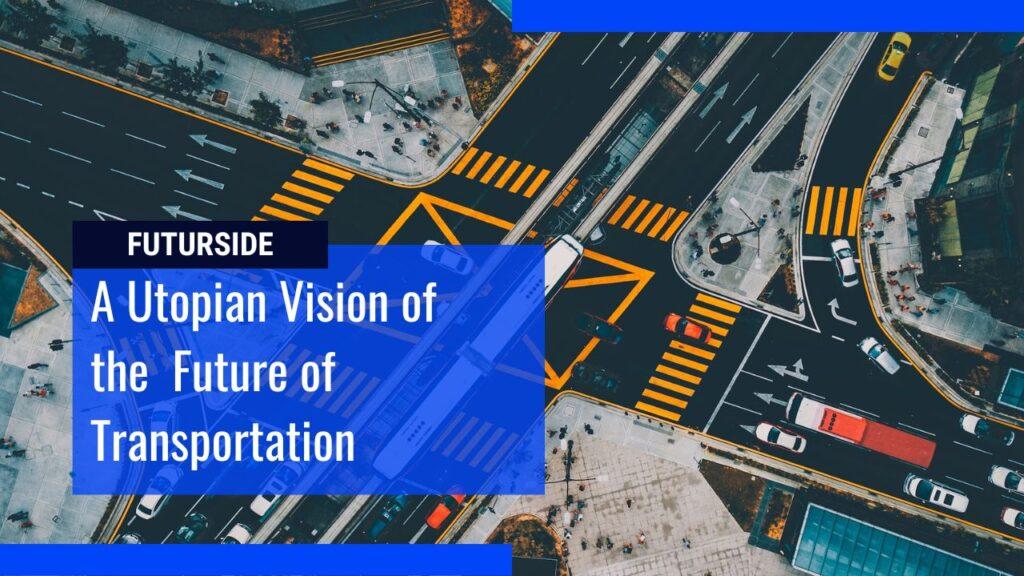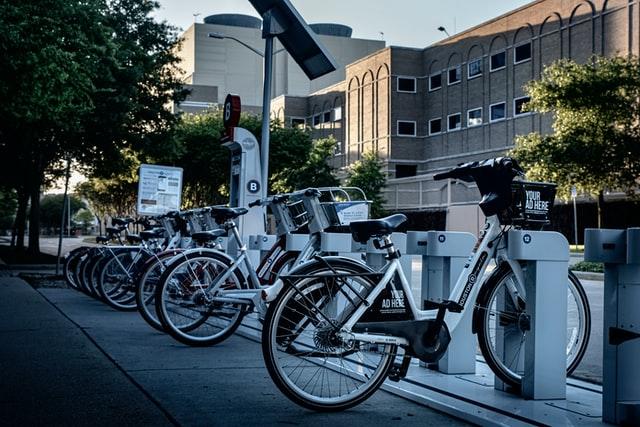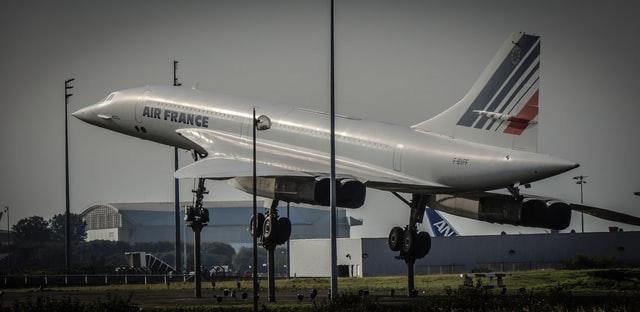The world population is increasing and is expected to reach 9.7 billion by 2050. The UN predicts that about 68% of the world’s population will live in cities by 2050. Which represents around 6.5 billion people living in urban spaces. Hence all these people living in a compact space will have to get around. And with global warming and climate change, the traditional transport system is becoming a thing of the past.
Technological advancements are changing the way we travel. The transport industry will be driven by these advancements, along with social, economic and environmental concerns. The future of the transport industry will be green and packed with technology. Electric cars will be the norm and many people will be switching to eco-friendly cars.

Transportation is a constant reality and we are only a few decades away from seeing these futuristic concepts in action. Practical innovations are already underway and will focus on improving operational costs, reducing vehicle emissions and increasing communication. While it may be impossible to predict the speed of change in this sector, several trends will make it easier to see how transportation will look in the future.
We might see more autonomous vehicles on the roads. Coordinated autonomous vehicles through highway systems will reduce traffic and accidents and ensure that passengers follow safety regulations. However, while autonomous transit is a reality, it will be slower than most people think. As a lot of things still have to be done.
For instance, cars are now constantly gathering millions of data points every second through sensors and can detect obstacles on the road, monitor traffic situations and anticipate bottlenecks. This data is then used to improve safety, reliability and efficiency. Companies like Google, Waymo and Tesla are building machine learning platforms to improve the ability of autonomous vehicles. As a result of all these changes, the transport industry will have a more intelligent and autonomous system.
CO2 emissions and the environmental impact have moved to the forefront of public attention and have been one of the driving forces in leading electric vehicle adoption. Everything from cars to trucks and buses is going electric. Road vehicles of the future will be electric and fully autonomous.

Electric vehicles or EVs, are poised to surpass conventional internal combustion-engine cars soon. While some traditional automakers have already started investing in EVs, smaller companies are also entering the space. In the future, there will be driverless systems and self-driving vehicles everywhere. This new technology will allow us to travel anywhere we want to go, with minimal hassle and cost.
Car brands will release new high-tech EV models and new battery technology will keep increasing the range of transport. Gas stations will disappear and be replaced with charging stations. As self-driving technology become widespread, it allows people to lay back and relax while their cars drive themselves.
Autonomous semi-trucks will travel across countries to deliver shipments with no human interaction. For small-scale delivery of packages and food, autonomous delivery vans and robots will do the same. In the air, swarms of delivery drones will drop off packages at people’s doorstep. Every land vehicle will be electric, but what about planes.
The invention of flight has been one of the most profound technologies in history and for the past century, it has functioned pretty much the same way. The aviation industry is also one of the fastest-growing sources of greenhouse gas emissions and unlike cars, aviation is often excluded from national climate plans because it operates across borders. It is one of the hardest greenhouse gas emitters to decarbonize.
But that could all change with the advent of lithium-ion batteries and electric propulsion technologies which are igniting a revolution in transportation. However, the fundamental problem with electric aircraft is the range. A good lithium-ion battery cell has only 1/4 of the energy content of the equivalent weight of jet fuel. So if you were to take an existing airplane and replace its components with only batteries it will only fly one-twentieth the distance of conventional aircraft.
However, there’s been a significant revolution and improvement in the performance of batteries which the automotive industry is driving. it is extremely promising that one of these battery technologies can be scaled up for an electric flight. So the real question is not when we will have electric airplanes that fly far enough but it will start replacing conventionally fueled air transport.
Currently, the British airline Easyjet is developing a fleet of electric airplanes that it hopes to have in service by 2030. With improved batteries, in the future electric airplanes will likely dominate short-distance domestic flights. The future of transportation is ripe for disruptive change. Ultimately, the future of transportation depends on the way we choose to move. High-speed railways will be everywhere.
Dozens of new rail mega projects such as the California high-speed rail and rail Baltica will quickly move commuters around. Some trains that utilize Maglev (Magnetic Levitation) technology will accelerate up to 400 miles per hour competing with commercial jets. High-speed rail will connect the world like never before.
For instance, China has the largest high-speed rail network in the world. The country has more than 23000 miles of high-speed railway. Japan’s bullet trains can reach speeds of almost 200 – 275 miles per hour. France began service of the high-speed TGV train in 1981 and the rest of Europe quickly followed. High-speed rail is quickly expanding all over the world in places like India, Saudi Arabia, Russia, Iran and Morocco.

While high-speed rail expands globally and even more advanced technology will emerge. The futuristic tube system called Hyperloop which is vacuum-sealed Maglev trains will revolutionize long-distance ground transportation reaching speeds up to 760 miles per hour. Hyperloop systems will vastly outpace traditional airliners.
Virgin hyperloop is racing to get the technology mainstream, the company has already a 500-meter working test track in the Nevada desert. It has had already its first human passengers and in the future hyperloop systems maybe everywhere. In the near future, flying cars may become commonplace. Virgin Galactic, SpaceShipTwo will provide point-to-point transportation between major cities.
Many companies and governments are investing in new technology that will make our lives easier. While mobility changes at an unprecedented pace on a global level, the future of transportation starts at the local level. While national infrastructure is geared toward urban areas, local transit systems are tailored to meet the needs of residents.
Not all future transportation needs will be solved by a shiny new MagLev train or EVs. Some existing technologies work pretty well. The bicycle is one of the most efficient machines on the planet. And a lot of architects are considering cycling when planning for cities. As millennials begin to re-urbanize, they will use active transportation instead of cars.

And a more sustainable way to travel maybe by walking. Electric bikes, also known as e-scooters, have made transportation easier and more convenient and they are widely deployed. In the future, the global transportation system will be vastly different than today. Elon musk says roads must go 3D which means either flying or going throw tunnels.
Currently, Elon Musk’s boring company is digging small experimental tunnels under cities. If Musk can significantly cut down on tunneling costs. In the future, cities will have thousands of tunnels underneath them, shuttling cars and passengers around on electric sleds. What about flying cars!
Yet we don’t have them even though the potential market is huge. The market for urban air mobility is expected to reach 1.5 trillion by 2040. Companies and countries like Boeing, Airbus, Toyota, Japan and Uber are recognizing the need for more efficient travel and injecting millions into developing vertical takeoff and landing vehicles (VTOL).
Studies showed that they could become highly profitable in the future. Cities are likely to be filled with air taxis. Quickly transporting passengers through the skies on the ground roads will be transformed. Though these operate more like massive drones or helicopters, VTOL have the potential to fundamentally change the way we commute in cities.
Supersonic jets may make a comeback, currently Virgin Galactic is planning to get them back in service. In the future supersonic jet will reach hypersonic speed of 3800 miles per hour, these aircraft will be up to 5 times faster than typical airliners. Right now the startup Hermeus is developing a Mach 5 hypersonic passenger aircraft, which it hopes to have finished by 2029. With it, New York to Paris would be only a 90-minute flight.

Airships may also come back, with plenty of space, emits 80 to 90% CO2 than airplanes, amazing views and the ability to land almost anywhere. They may be commonplace for transporting cargo to remote locations and serving as luxurious sky yachts for the wealthy. Boats also are facing a makeover, startups like Arc and X shore are developing all-electric small-scale boats. While companies like Silent yachts and Navier are building solar-powered electric hydrofoil yachts.
In the future, electric boats will be mainstream and navigate silently across lakes and seas. And large-scale ships will go green with hydrogen fuel cells and batteries. These will begin to power cruise ships and military vessels and eventually container ships. In Norway, there is already a fully autonomous electric container ship called the Yara Birkeland and now the EU project Flagships are working to get the world’s first hydrogen-powered container ship in the water.
In the future, hydrogen and electric-powered autonomous container ships will dominate the shipping industry, sailing quietly across our oceans with zero emissions. And another breakthrough will be the StarTram, which is an electromagnetic railgun system. The system will likely be launching payloads into orbit or around the world at a fraction of the cost of current rockets and without any emissions. We may also see rockets transporting people around the world.
SpaceX wants to use its Starship for hyper-fast earth-to-earth flights. Accelerating people up to 17 000 miles per hour. With the starship, New York City to Shanghai will be only a 39-minute journey. Rockets transporting people between planets will also become mainstream in the future. Starships will shuttle space tourists to the moon and transport colonists to Mars. Companies like Virgin Galactic and Amazon Blueorigin have already entered the race.
Hence, autonomous vehicles, electric cars and buses will shuttle people around cities. High-speed rail, Hyperloop and underground subways will efficiently move citizens around. On the sidewalks, there will be digitally rentable electric scooters and bikes for pedestrians. In the air, there will be drones, flying taxis, electric planes, airships and supersonic jets, At sea solar and hydrogen power boat power. The future is packed with a lot of transportation hypotheses and a lot of well underway to become a reality.

0 Comments